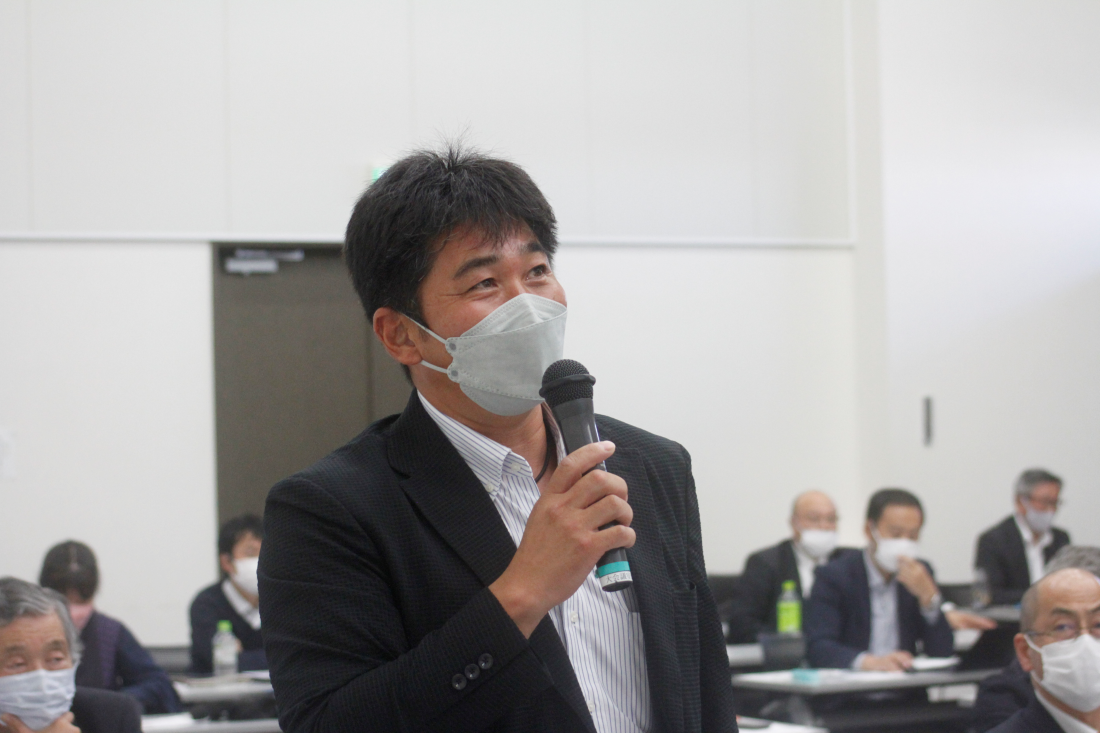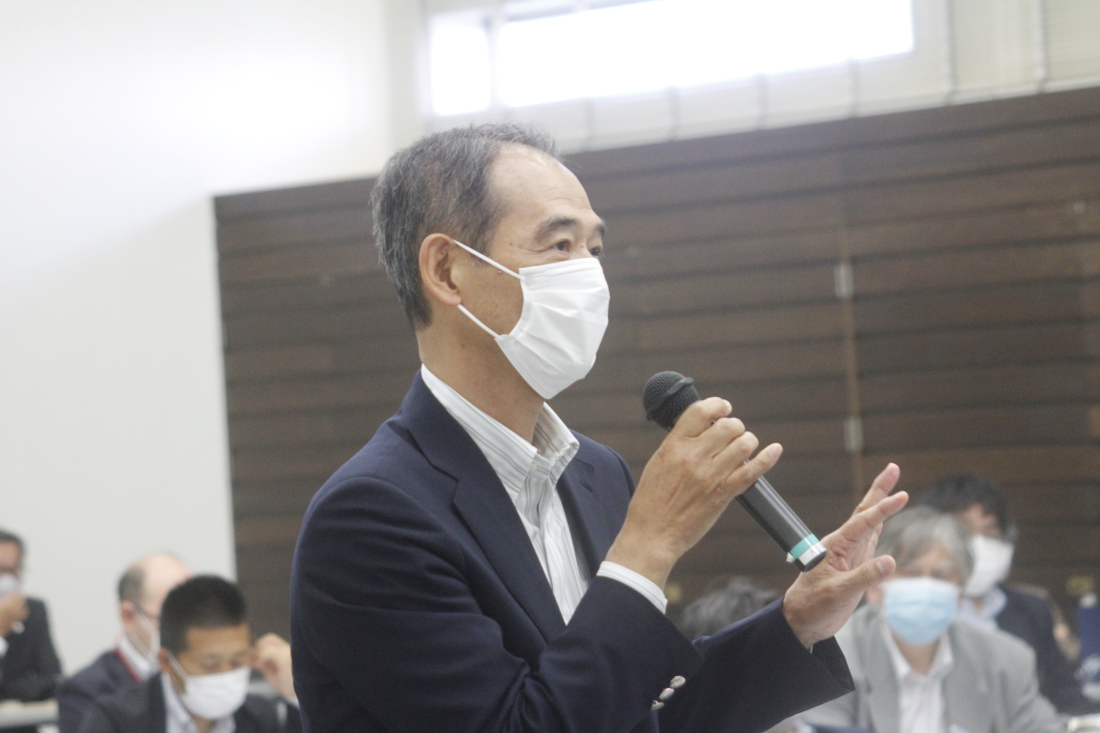News
[Event Report] Report on the Workshop "Hakodate Input-Output Table and Blue Carbon"
The Ocean Policy Research Institute (OPRI) of the Sasakawa Peace Foundation held a workshop titled "Hakodate Input-Output Table and Blue Carbon" on Friday, June 10th at Fisheries and Oceans Hakodate in Hakodate-City, Hokkaido-Prefecture. OPRI has been working on the creation of an input-output table that breaks down the marine industry in Hakodate and analyzes policies based on the table. OPRI has also been conducting a demonstration of blue carbon credits with the Japan Blue Economy Technology Research Association. This time, a workshop was held from 13:30 to 17:00 on the 10th to integrate these two themes, allowing researchers and government officials working on economic analysis and blue carbon research and practice in Hakodate City to gather and report on their respective efforts.
The moderator of the workshop, Dr. Akira Nagano, Professor Emeritus of Future University Hakodate, began by explaining the purpose and background of the workshop. Then, Dr. Atsushi Watanabe, Senior Researcher of OPRI, expressed his appreciation for the participation in the workshop and his expectations for the outcomes. The following is a summary of each presenter's report, the panel discussion, and question-and-answer session.
Mr. Hajime Tanaka, researcher at OPRI, gave a presentation titled "Updating the Input-Output Table and Analyzing the Industrial Structure (Hakodate City as a Case Study)." Comparing the industrial structure of Hakodate in 1998 and 2015 using the Input-Output table classifying marine industries in Hakodate, he found that kelp-related industries had a higher spillover effect on the overall economy of Hakodate than squid-related industries. He also made policy recommendations for the promotion of cultivated kelp and kelp processing industries through the protection of natural kelp as blue carbon credits.
Dr. Atsumi Kataishi, Visiting Professor at Chuo University Research and Development Organization, gave a presentation titled "How Hakodate's Industrial Structure Has Changed” (Comparison with the 1998 Hakodate City Input-Output Table). Using the same Hakodate Input-Output table as in Tanaka's presentation, she compared the industrial structure of Hakodate in 1998 and 2015, and noted decreases in population, number of workers aged 15 and over, arable land area, agricultural output, fishery output, fishery production value, manufacturing shipments, wholesale and retail sales value, and tourism arrivals.
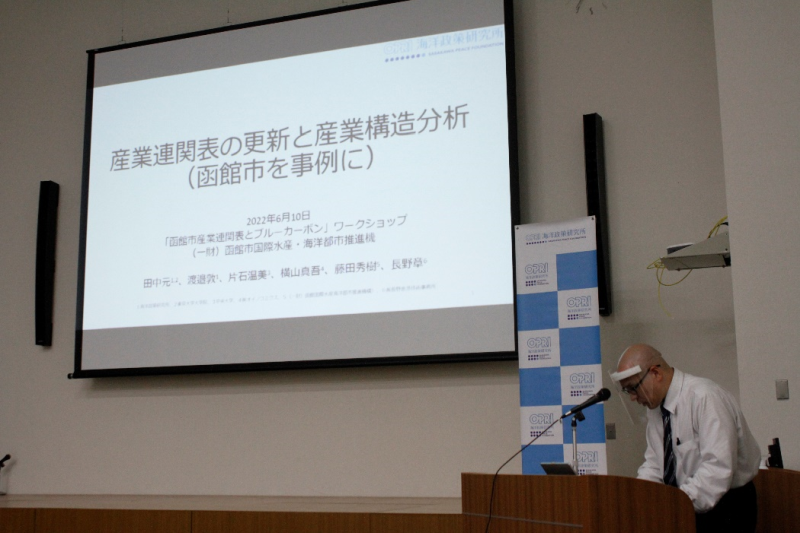
Mr. Hajime Tanaka (Ocean Policy Research Institute of the Sasakawa Peace Foundation)
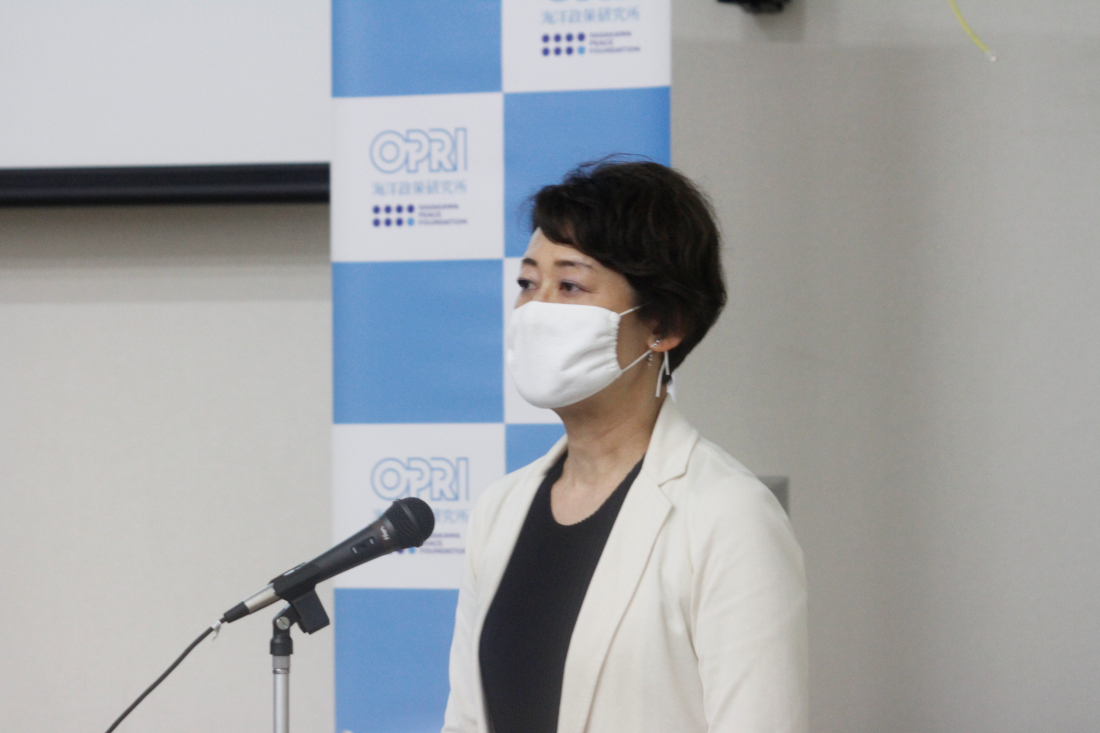
Dr. Atsumi Kataishi (Visiting Professor at Chuo University Research and Development Organization)
Mr. Ryudai Ishimoto, of Hokkaido's Fisheries and Forestry Department, gave a presentation titled "Zero Carbon Hokkaido and Other Initiatives," introducing "Zero Carbon Hokkaido" to reduce greenhouse gas emissions in Hokkaido to virtually zero by 2050, Hokkaido's Global Warming Prevention Promotion Plan, and the Hokkaido Government's Blue Carbon initiatives to date. He also introduced the Hokkaido Government's Blue Carbon initiatives to date, including the Fisheries Multifunctional Measures Project, the Seaweed Bed Function Restoration Promotion Project, and the Seaweed Bed and Tidal Flat Vision.
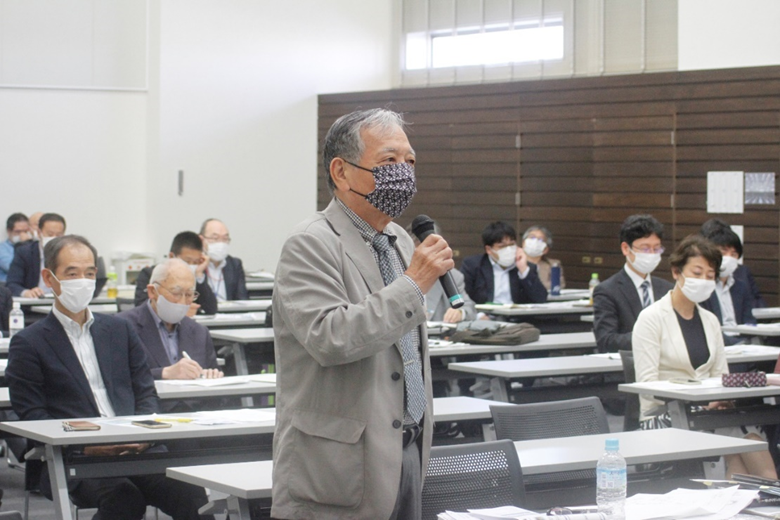
Dr. Akira Nagano (Professor Emeritus of Future University Hakodate)
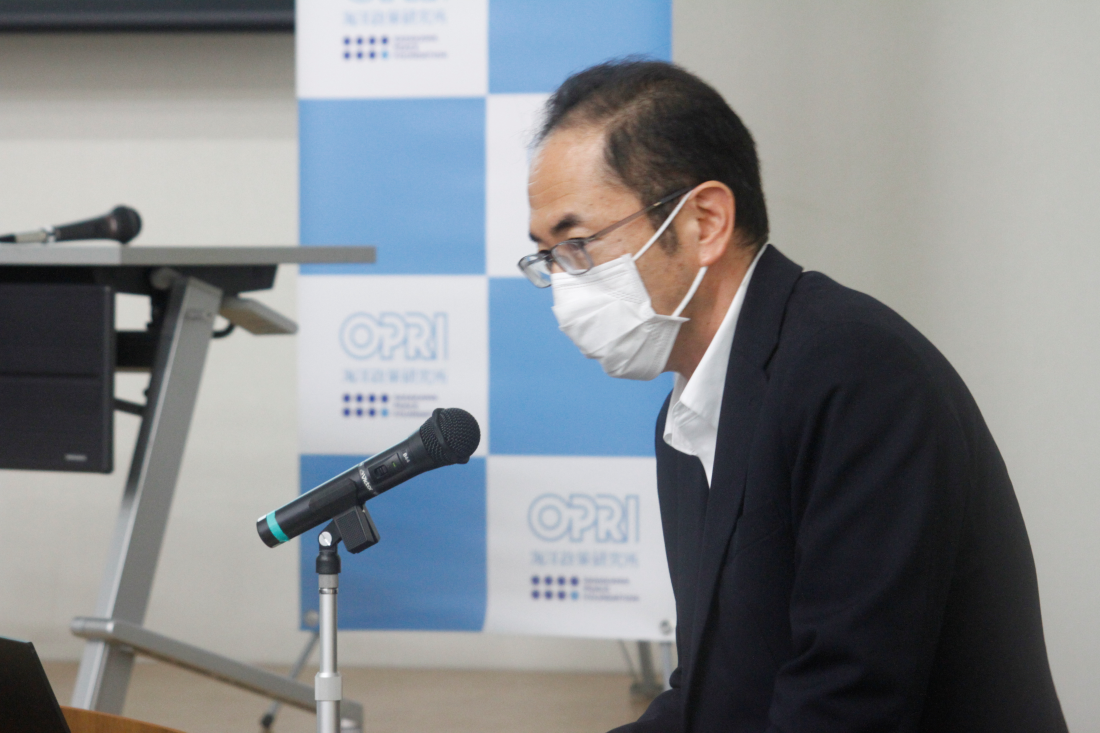
Mr. Ryudai Ishimoto (Hokkaido's Fisheries and Forestry Department)
Dr. Atsushi Watanabe, Senior Researcher at OPRI, gave a presentation titled "Blue Carbon and Overseas Trends. He introduced the progress of discussions on blue carbon around the world, the case of blue carbon credits, and the formation of the Japan Blue Economy Technology Research Association.
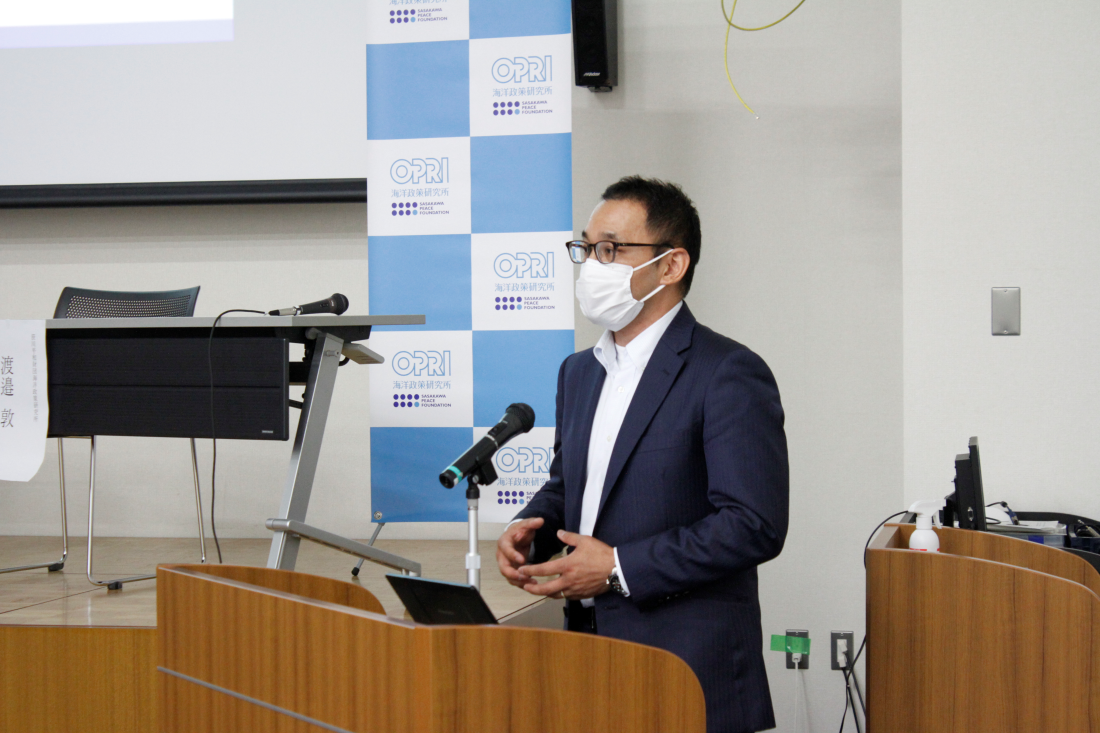
Mr. Kazuhito Watanabe (Miyagi Prefecture's Forestry and Fisheries Policy Office)
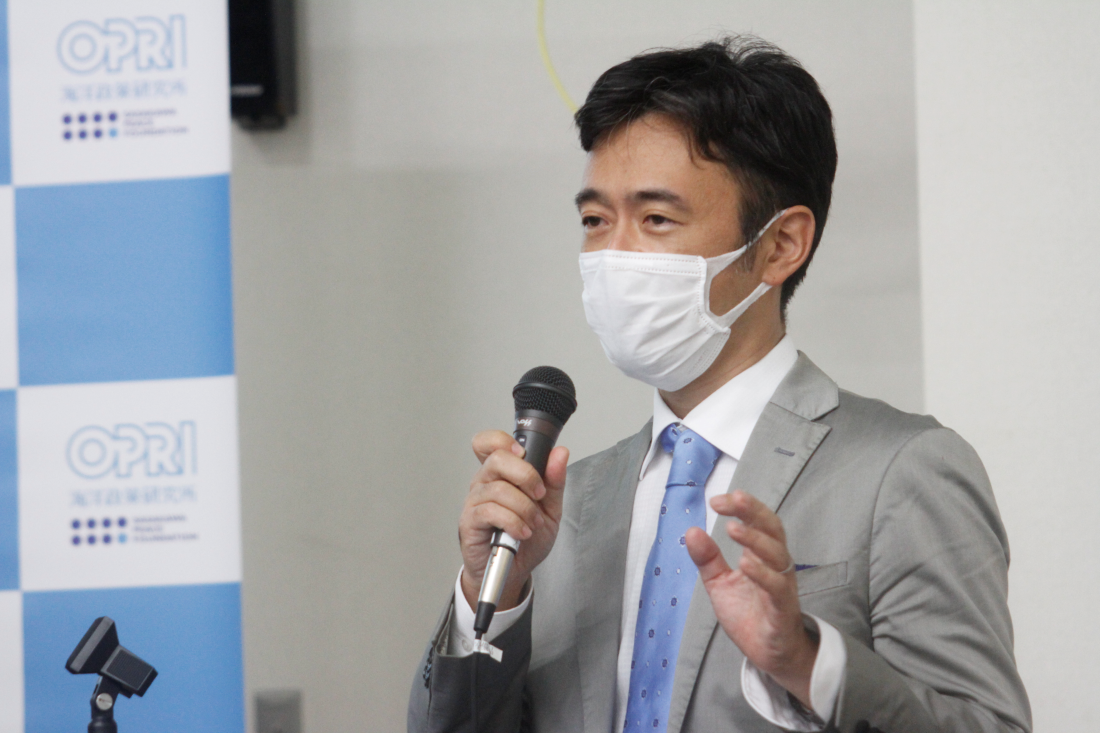
Dr. Atsushi Watanabe (Senior Researcher at OPRI)
Dr. Masakazu Hori of the National Fisheries Research and Education Organization made a presentation titled "Blue Carbon in Large Sea Algae.” He introduced domestic trends in blue carbon, research on "the development of blue carbon evaluation methods and efficient seaweed bed formation and expansion technology" as part of a research project commissioned by the Agriculture, Forestry and Fisheries Research Promotion Project, and introduced a research case study on the utilization of blue carbon in China.
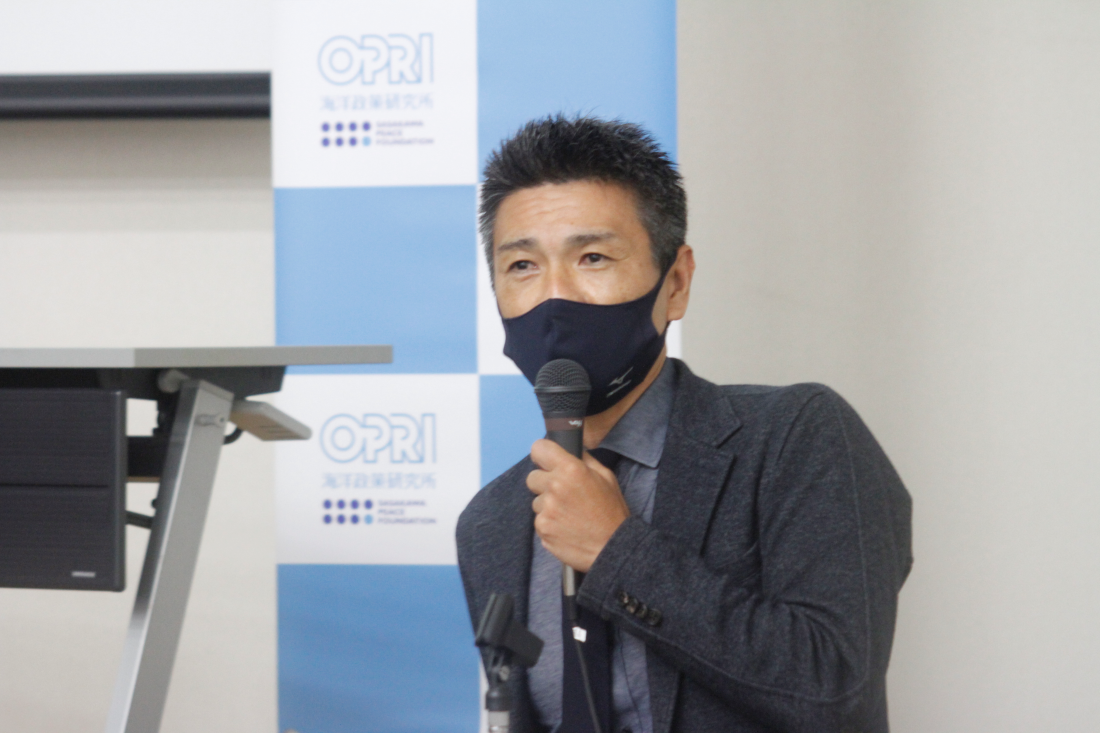
Dr. Asahiro Kuwae (President of Japan Blue Economy Technology Research Association)
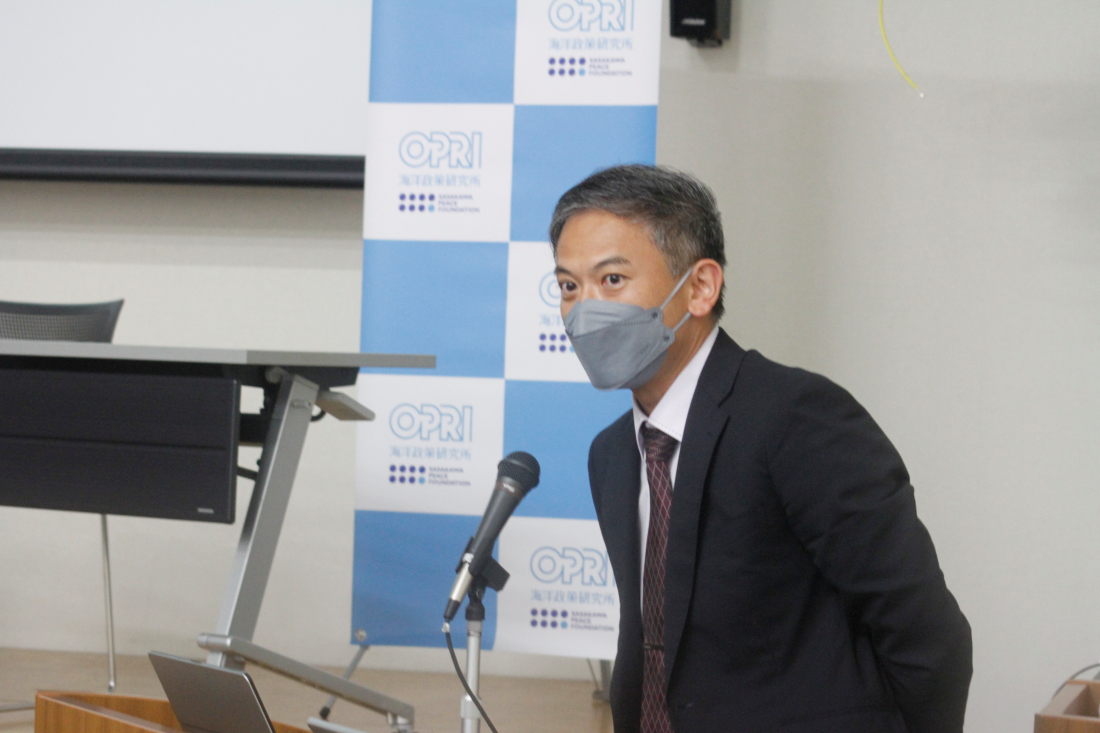
Dr. Masakazu Hori (the National Fisheries Research and Education Organization)
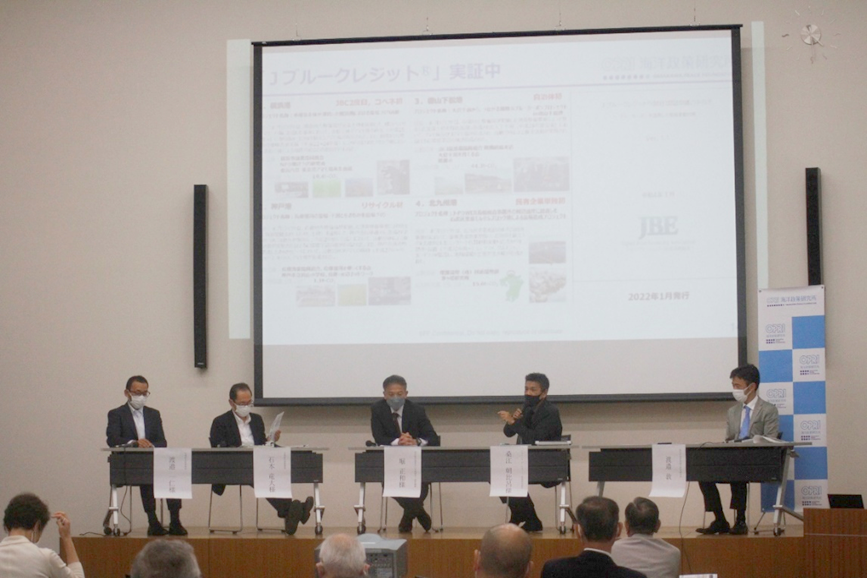
On-stage Discussants (Mr. Kazuhito Watanabe, Mr. Ryudai Ishimoto, Dr. Masakazu Hori, Dr. Asahiro Kuwae, and Dr. Atsushi Watanabe) (from left to right)
Another audience also asked about the role of fishermen's cooperatives in the introduction of blue carbon credits, as fishermen are actually the main actors in the seaweed beds. Dr. Kuwae stated that it is important, based on past cases, for local governments to participate from the standpoint of contributing to the promotion of local government policies, and for fishermen to actually receive the credits and use them for sustainable conservation activities. Mr. Kazuhito Watanabe also stated that it is important for the prefectural and local governments to play a "connecting" role. Dr. Hori mentioned that, unlike forests, the sea is often lacking in seaweed bed ledgers and basic on-site data, so it is necessary to have fishermen's cooperatives and municipalities work together to organize data for calculating the amount of carbon dioxide absorbed by seaweed beds.
When asked about the requirements for certification of blue carbon credits for cultured and wild kelp, Dr. Hori stated that cultured kelp is not yet eligible for credits because the amount of flow algae transported in the deep sea is not known. Dr. Kuwae stated that it is necessary to determine the residual rate, the percentage of atmospheric carbon dioxide sequestered by plants that is stored without decomposition, but that it would not be sustainable to do anything that would interfere with fishermen's core business to do so.
